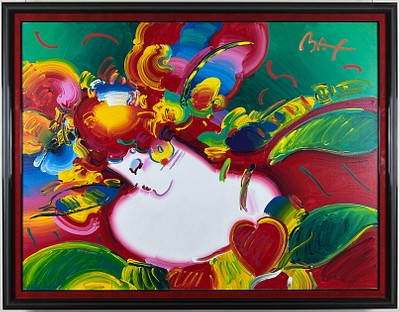Yayoi Kusama "Untitled, Flower" Offset Lithograph
Lot 823
Categories
Estimate:
$300 - $450
Absentee vs Live bid
Two ways to bid:
- Leave a max absentee bid and the platform will bid on your behalf up to your maximum bid during the live auction.
- Bid live during the auction and your bids will be submitted real-time to the auctioneer.
Bid Increments
| Price | Bid Increment |
|---|---|
| $0 | $5 |
| $100 | $10 |
| $200 | $20 |
| $1,000 | $50 |
| $5,000 | $100 |
| $10,000 | $200 |
About Auction
By Scottsdale Art Exchange
Jul 29, 2023
Set Reminder
2023-07-29 12:00:00
2023-07-29 12:00:00
America/New_York
Bidsquare
Bidsquare : Our Annual Midsummers Day Auction
https://www.bidsquare.com/auctions/scottsdale-art-exchange/our-annual-midsummers-day-auction-13196
This auction will feature 900 amazing items. The Auction will include 300 items for our fine art gallery and over 600 items from our consignment partners. Scottsdale Art Exchange sue@firerockfineart.com
This auction will feature 900 amazing items. The Auction will include 300 items for our fine art gallery and over 600 items from our consignment partners. Scottsdale Art Exchange sue@firerockfineart.com
- Lot Description
Yayoi Kusama is a renowned Japanese contemporary artist known for her distinctive and avant-garde artworks, particularly her immersive installations, polka-dot motifs, and exploration of themes such as infinity and the self. Here are some key points about Yayoi Kusama: 1. Early Life and Influences: Yayoi Kusama was born on March 22, 1929, in Matsumoto, Nagano, Japan. She grew up in a traditional Japanese family and began creating art at a young age. Kusama's artistic development was influenced by her experiences with hallucinations and her lifelong struggles with mental health. 2. Move to the United States: In 1957, Kusama moved to the United States, settling in New York City. She became an active participant in the avant-garde art scene of the 1960s, collaborating with artists such as Donald Judd, Claes Oldenburg, and Andy Warhol. During this time, she developed her signature artistic style and began experimenting with immersive installations. 3. Polka Dots and Infinity: One of the most recognizable features of Kusama's artwork is her frequent use of polka dots. She incorporates them into various mediums, including paintings, sculptures, installations, and even her own attire. Kusama sees polka dots as a representation of the infinite and uses them as a way to explore ideas of repetition, pattern, and the dissolution of the self. 4. Infinity Mirror Rooms: Kusama's Infinity Mirror Rooms are among her most celebrated works. These mirrored installations feature a room filled with various objects covered in polka dots, with mirrored walls creating a sense of infinite space. Viewers are immersed in a visually overwhelming experience that plays with perceptions of space, light, and reflections. 5. Performance Art: Kusama's practice also includes performance art, where she often incorporates her body and costumes into her creative expressions. She staged a series of provocative and politically charged happenings and events during the 1960s, using her body as a canvas to address issues such as feminism, consumerism, and the Vietnam War. 6. International Recognition: Kusama's artworks have gained significant international recognition and have been exhibited in major museums and galleries around the world. She represented Japan at the Venice Biennale in 1993 and has received numerous awards and honors for her contributions to contemporary art. 7. Legacy and Influence: Yayoi Kusama's unique artistic vision and groundbreaking approach to art have had a profound impact on contemporary art practices. Her exploration of themes like infinity, the subconscious mind, and identity continues to inspire and resonate with artists, curators, and art enthusiasts globally. Yayoi Kusama's bold artistic expressions, use of polka dots, and immersive installations have made her a prominent figure in contemporary art. Her willingness to confront personal struggles and use art as a form of therapy has contributed to her distinct voice and has cemented her legacy as an influential artist of our time.
Measures 12 x 18.
Mounted to archival quality paper.
Verso is blank.Good condition. No rips, tears, creases.Condition
- Payment & Auction Policies
-
Available payment options
-
-
- Buyer's Premium



 EUR
EUR CAD
CAD AUD
AUD GBP
GBP MXN
MXN HKD
HKD CNY
CNY MYR
MYR SEK
SEK SGD
SGD CHF
CHF THB
THB



















